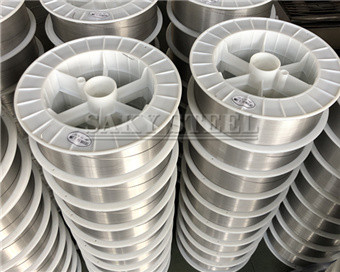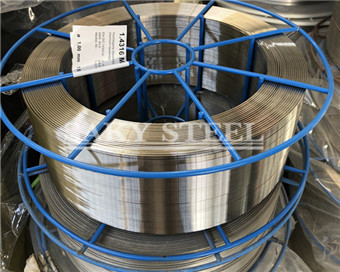The production process of 314 stainless steel wire typically involves the following steps:
1.Raw material selection: The first step is to select the appropriate raw materials that meet the required chemical composition and mechanical properties for 314 stainless steel. Typically, this involves selecting high-quality steel billets or bars that are then melted down and refined.
2.Melting and refining: The selected raw materials are melted down in a furnace and then refined through processes such as AOD (argon-oxygen decarburization) or VOD (vacuum oxygen decarburization) to remove impurities and adjust the chemical composition to the desired levels.
3.Casting: The molten steel is then cast into billets or bars using continuous casting or ingot casting methods. The cast billets are then rolled into wire rods.
4.Hot rolling: The wire rods are heated to a high temperature and passed through a series of rollers to reduce their diameter to the desired size. This process also helps to refine the grain structure of the steel, making it stronger and more uniform.
5.Annealing: The wire is then annealed to remove any residual stresses and improve its ductility and machinability. Annealing is typically done in a controlled atmosphere to prevent oxidation and ensure uniform heating.
6.Cold drawing: The annealed wire is then cold drawn through a series of dies to further reduce its diameter and improve its surface finish and mechanical properties.
7.Final heat treatment: The wire is then heat treated to achieve the desired final properties, such as strength, hardness, and corrosion resistance.
8.Coiling and packaging: The final step is to coil the wire onto spools or coils and package it for shipment.
The specific details of the production process may vary depending on the manufacturer and the intended application of the wire.
Post time: Feb-21-2023

